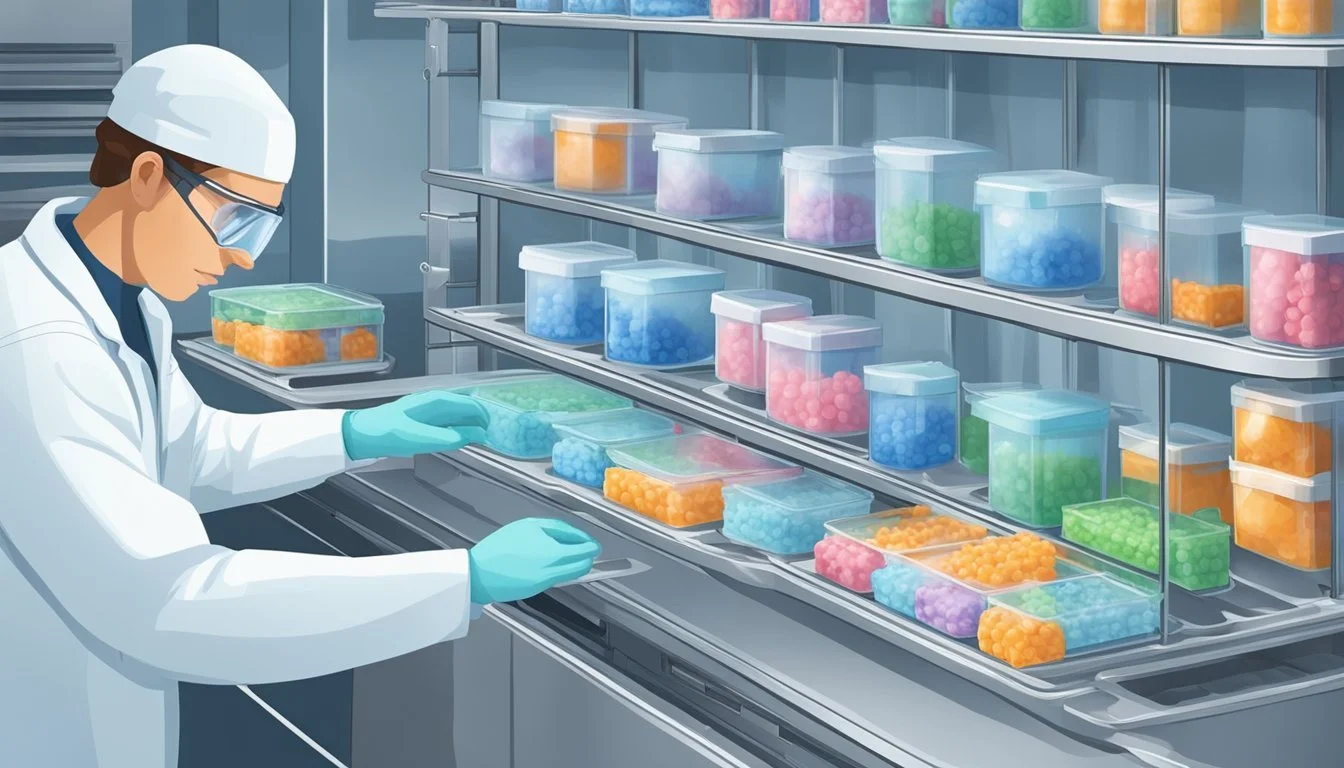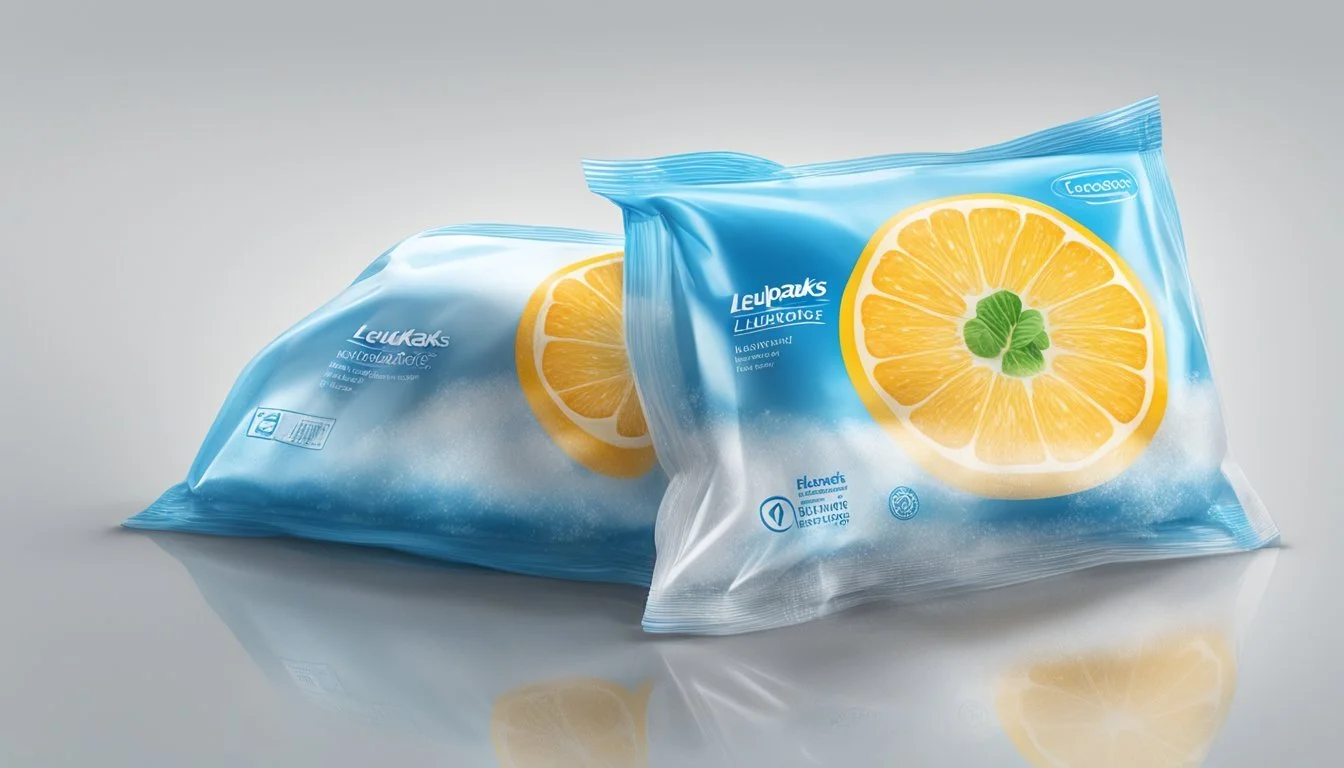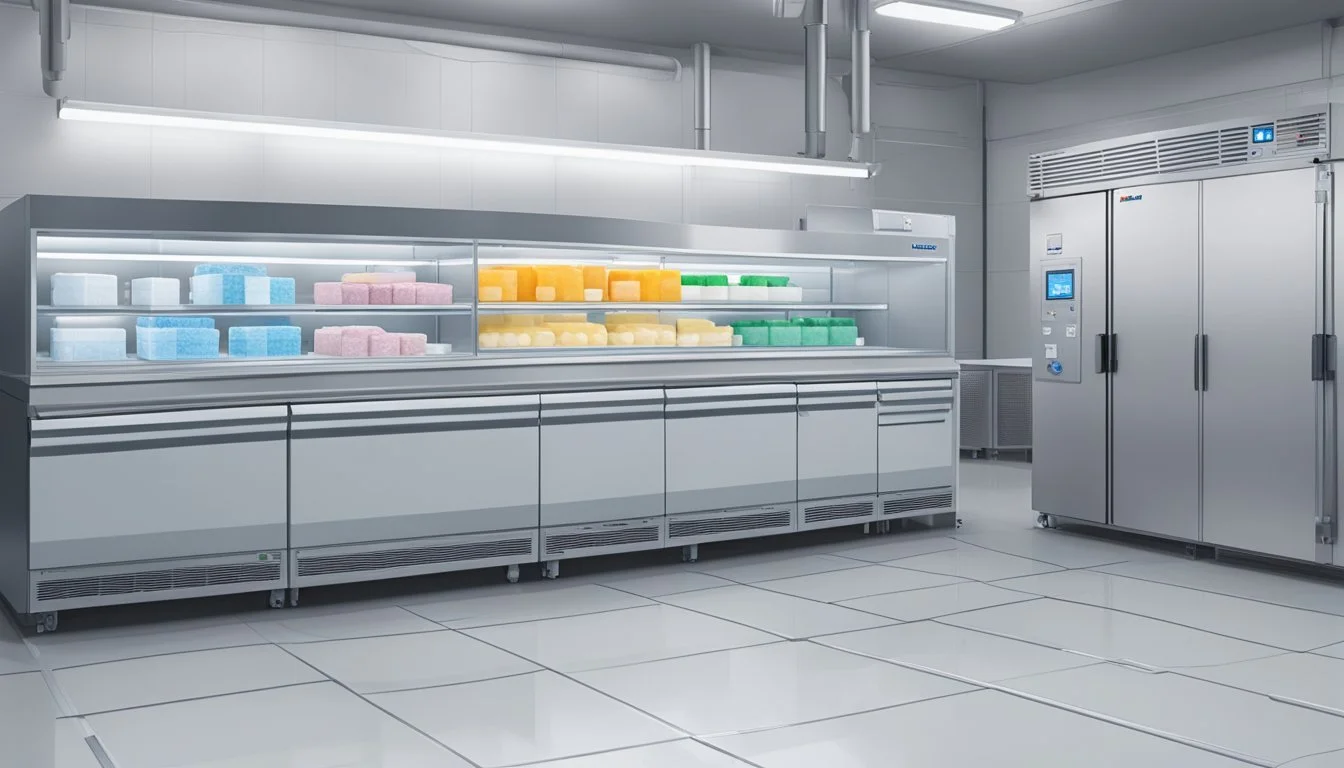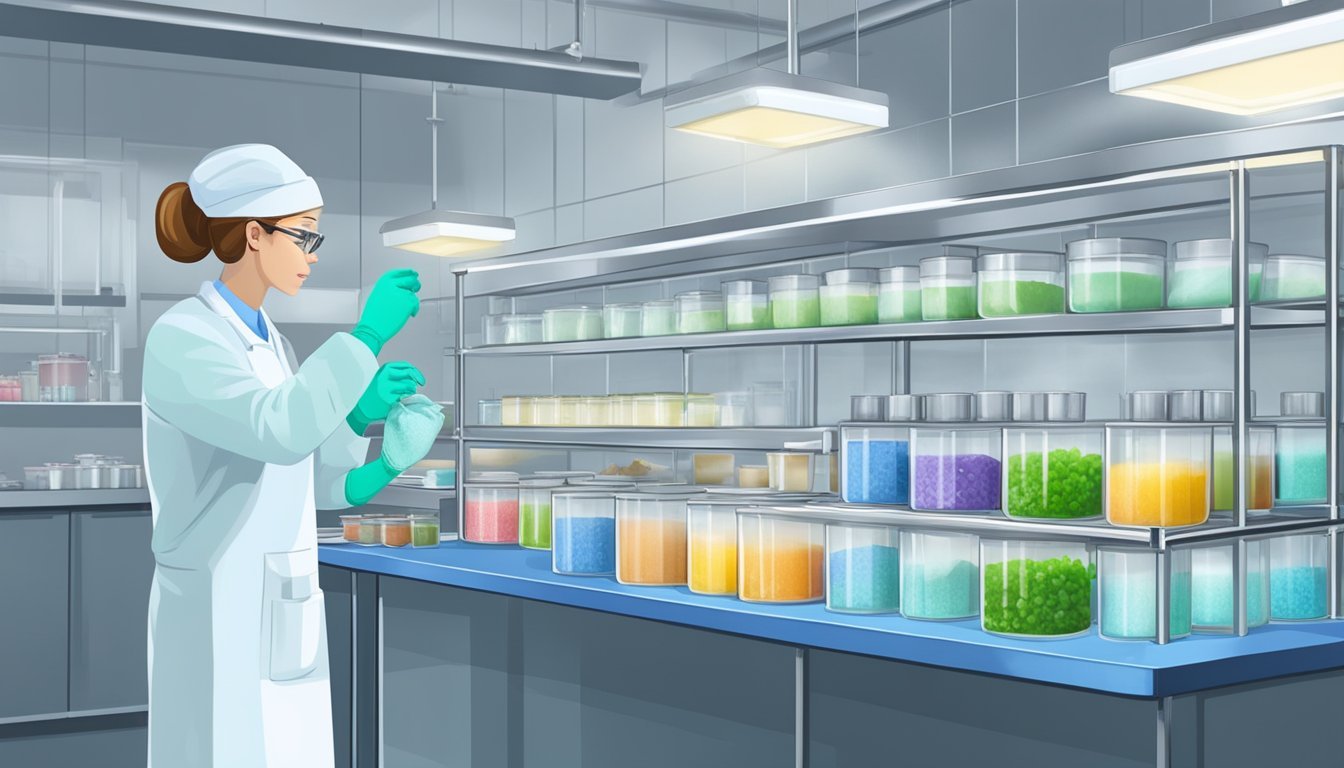Fresh vs Frozen Leukopaks: Comparing Viability, Functionality, and Research Applications
Leukopaks are invaluable resources in cell therapy research and drug development. These concentrated collections of white blood cells offer researchers a rich source of immune cells for various applications. When considering leukopaks for experiments, scientists often face a choice between fresh and frozen preparations.
Fresh leukopaks provide the highest viability and functionality of cells, making them ideal for time-sensitive studies and applications requiring maximum cell performance. These products are typically shipped immediately after collection from donors, preserving the cells in their most natural state. However, the use of fresh leukopaks requires careful coordination of donor availability and experimental timelines.
Frozen leukopaks offer greater flexibility in scheduling and allow for standardization across multiple experiments. The cryopreservation process enables long-term storage and shipping to distant locations. While some cell loss and functional changes may occur during freezing and thawing, many researchers find frozen leukopaks suitable for their needs, especially in large-scale manufacturing processes where consistency is crucial.
Understanding Leukopaks
Leukopaks are concentrated collections of white blood cells obtained through apheresis. They contain a diverse array of immune cells, making them valuable for research and therapeutic applications in immunology and cell therapy.
Definition and Purpose
Leukopaks are specialized blood products rich in leukocytes (white blood cells). They are collected through a process called leukapheresis, which selectively removes white blood cells from a donor's blood while returning other components.
Researchers and clinicians use leukopaks for various purposes, including:
Studying immune cell function
Developing new cell therapies
Manufacturing CAR-T cells for cancer treatment
Investigating autoimmune disorders
The high concentration of immune cells in leukopaks makes them efficient for large-scale experiments and clinical applications.
Types of Cells in Leukopaks
Leukopaks contain a diverse mix of white blood cells, including:
T cells: Key players in adaptive immunity
B cells: Antibody-producing lymphocytes
NK cells: Natural killer cells that target infected or abnormal cells
Monocytes: Precursors to macrophages and dendritic cells
Granulocytes: Neutrophils, eosinophils, and basophils
Additionally, leukopaks may contain small populations of:
CD34+ cells: Hematopoietic stem and progenitor cells
Dendritic cells: Antigen-presenting cells crucial for immune responses
The exact composition can vary between donors and collection methods. Researchers can isolate specific cell types from leukopaks for targeted studies or applications.
Fresh Leukopaks
Fresh leukopaks provide a rich source of viable immune cells for research and clinical applications. These concentrated white blood cell preparations offer unique advantages and challenges for cell-based studies and therapies.
Characteristics of Fresh Leukopaks
Fresh leukopaks contain a high concentration of mononuclear cells, including lymphocytes, monocytes, and other immune cells. These preparations are typically collected through apheresis, a process that separates specific blood components from a donor.
The cell viability in fresh leukopaks is generally above 90%, making them ideal for immediate use in experiments or cell isolation procedures. Fresh leukopaks maintain the original cellular composition and activation states found in the donor's blood.
Researchers often receive fresh leukopaks within 24 hours of collection to ensure optimal cell quality and functionality.
Advantages of Using Fresh Leukopaks
Fresh leukopaks offer several benefits for cellular research and therapeutic applications:
High cell viability and functionality
Preservation of native cell phenotypes and activation states
Immediate availability for experiments
Minimal processing required before use
Suitability for isolation of specific cell subsets
These advantages make fresh leukopaks valuable for studies requiring large numbers of functional immune cells or for developing cell-based therapies.
Limitations of Fresh Leukopaks
Despite their benefits, fresh leukopaks have some limitations:
Short shelf life (typically 24-48 hours)
Need for immediate processing or use
Logistical challenges in shipping and handling
Potential for circadian rhythm effects on cell populations
Limited flexibility in experimental timing
Researchers must carefully plan experiments and coordinate with suppliers to ensure optimal use of fresh leukopaks within their limited viability window.
Donor-to-Donor Variability
Donor-to-donor variability is a significant factor in fresh leukopak research:
Cell composition and ratios can differ between donors
Immune cell activation states may vary
Genetic and environmental factors influence cell characteristics
Reproducibility challenges in experiments using cells from different donors
To address this variability, researchers often use cells from multiple donors or implement standardized protocols for cell isolation and characterization. Some studies may require donor matching or selection based on specific criteria to minimize variability and enhance reproducibility.
Frozen Leukopaks
Frozen leukopaks offer a convenient and flexible option for researchers working with large quantities of white blood cells. These cryopreserved samples maintain cell viability and functionality while allowing for extended storage periods.
Cryopreservation Process
The cryopreservation of leukopaks involves carefully freezing the cells to preserve their integrity. A cryoprotectant solution is added to the fresh leukopak sample to prevent ice crystal formation during freezing.
The mixture is then slowly cooled at a controlled rate, typically using specialized equipment. This gradual cooling process minimizes cellular damage.
Once frozen, the leukopaks are stored in liquid nitrogen at temperatures below -150°C. This ultra-low temperature effectively halts cellular metabolism and preserves the cells for extended periods.
Benefits of Frozen Leukopaks
Frozen leukopaks provide several advantages for researchers and clinicians. They offer increased flexibility in experimental timing, allowing studies to be conducted when convenient rather than immediately upon sample collection.
Cryopreserved samples can be shipped more easily than fresh leukopaks, as they are less time-sensitive. This enables broader access to diverse donor populations.
Frozen leukopaks also allow for better standardization across experiments. Researchers can use cells from the same donor or pool of donors for multiple studies, reducing variability.
Long-term storage of frozen leukopaks facilitates large-scale studies and enables the creation of cell banks for future use.
Challenges with Frozen Leukopaks
While frozen leukopaks offer many benefits, they also present some challenges. The freezing and thawing process can lead to a slight decrease in cell viability compared to fresh samples.
Some cell subsets may be more sensitive to cryopreservation than others, potentially altering the relative proportions of different cell types in the sample.
Proper thawing techniques are crucial to maintain cell functionality. Rapid thawing followed by careful washing steps is typically required to remove cryoprotectants and ensure optimal cell recovery.
Researchers must consider potential changes in cell surface markers or functional characteristics that may occur due to the freeze-thaw process.
Storage and Handling
Proper storage and handling are essential for maintaining the quality of frozen leukopaks. Samples must be kept at ultra-low temperatures, typically in liquid nitrogen storage tanks, to prevent degradation.
Temperature fluctuations during storage or shipping can significantly impact cell viability. Specialized shipping containers with temperature monitoring are often used for transportation.
Careful record-keeping is crucial to track storage duration, freeze-thaw cycles, and any temperature excursions that may affect sample quality.
Appropriate personal protective equipment and safety protocols are necessary when handling liquid nitrogen and frozen samples to prevent injury and maintain sample integrity.
Collection and Processing
Leukopak collection and processing involve specialized techniques to obtain high-quality mononuclear cells. These methods ensure the integrity and viability of cells for research and clinical applications. Strict protocols and advanced equipment are essential throughout the process.
Apheresis Procedure
Apheresis, specifically leukapheresis, is the primary method for collecting leukopaks. This technique uses a Spectra Optia apheresis system to separate and collect white blood cells from a donor's blood. The process takes 3-4 hours and can yield billions of mononuclear cells.
During leukapheresis, blood is drawn from the donor and passed through the apheresis machine. The device uses centrifugal force to separate blood components based on density. White blood cells are collected while other components are returned to the donor.
Anticoagulants like ACD-A are added to the collection bag to prevent clotting and maintain cell viability.
Processing and Isolation Techniques
After collection, leukopaks undergo further processing to isolate specific cell populations. Ficoll density gradient centrifugation is a common method used for this purpose. This technique separates mononuclear cells from other blood components based on their density.
The process involves:
Diluting the leukopak sample
Layering it over Ficoll medium
Centrifuging to create distinct layers
Carefully extracting the mononuclear cell layer
Additional techniques like magnetic cell sorting or flow cytometry may be used to isolate specific cell subsets. These methods allow for the purification of T cells, B cells, or other desired populations.
GMP Compliance in Processing
Good Manufacturing Practice (GMP) compliance is crucial for leukopak processing, especially for clinical applications. GMP guidelines ensure product quality, consistency, and safety.
Key aspects of GMP compliance include:
Controlled processing environments (e.g., cleanrooms)
Validated equipment and procedures
Comprehensive documentation
Regular quality control testing
GMP-compliant facilities use standardized protocols for cell isolation, cryopreservation, and storage. This approach minimizes variability between batches and ensures reproducible results.
Rigorous donor screening and testing are also integral to GMP compliance. These measures help prevent contamination and ensure the safety of the final product.
Clinical and Research Applications
Fresh and frozen leukopaks play crucial roles in advancing cell therapy research, immunotherapy, and drug development. These products provide essential cellular materials for a wide range of clinical and research applications.
Utilization in Cell Therapy Research
Leukopaks serve as a vital source of primary human cells for cell therapy research. Scientists use these products to isolate specific cell populations like T cells, B cells, and NK cells. Fresh leukopaks offer immediate access to viable cells, ideal for time-sensitive experiments. Frozen leukopaks provide flexibility in scheduling and allow for standardized starting materials across multiple studies.
Researchers employ leukopaks to develop and optimize cell manufacturing processes. These processes are critical for producing cellular therapies such as CAR-T cells. The high cell counts in leukopaks enable large-scale experiments and production runs.
Role in Immunotherapy and Drug Development
Leukopaks contribute significantly to immunotherapy research and drug development efforts. Pharmaceutical companies use these products to screen potential drug candidates and assess their effects on human immune cells. This approach helps identify promising compounds early in the development pipeline.
Immunotherapy researchers utilize leukopaks to study immune responses and develop novel treatment strategies. The diverse cell populations in leukopaks allow for comprehensive analysis of immune cell interactions and functions.
Clinical trials often require large quantities of specific immune cell types. Leukopaks provide a reliable source of these cells for manufacturing cellular therapies used in clinical studies.
Safety and Quality Considerations
Ensuring the safety and quality of leukopaks is paramount for research and clinical applications. Rigorous protocols govern donor selection, product purity, and regulatory compliance to maintain high standards.
Donor Selection and Screening
Donor selection involves comprehensive health assessments and medical history evaluations. Potential donors undergo thorough screenings for infectious diseases, including HBV, HCV, and HIV. Blood tests check for these viruses and other pathogens.
Lifestyle factors and travel history are also considered to minimize risks. Donors must meet specific criteria regarding age, weight, and overall health status. Recent vaccinations, medications, or medical procedures may temporarily disqualify individuals from donation.
Regular donors are often preferred due to their established health records and familiarity with the donation process.
Purity and Quality of Leukopaks
High-quality leukopaks require careful processing to ensure purity and cell viability. Isolation techniques separate white blood cells from other blood components.
Cell counts and viability assessments are performed before release. Typical specifications include:
Total nucleated cell count: >10 billion
Viability: >90%
Purity: >97% mononuclear cells
Quality control measures involve flow cytometry analysis to confirm cell populations. Sterility testing ensures the absence of bacterial or fungal contamination.
Fresh leukopaks generally offer higher viability, while frozen products provide longer storage options with minimal quality loss.
Regulatory Aspects
Leukopak production adheres to strict regulatory guidelines. GMP compliance is essential for products intended for clinical use.
Key regulatory considerations include:
Donor consent and confidentiality
Traceability of products
Documentation of collection and processing procedures
Quality management systems
Facilities must maintain proper licensing and accreditation. Regular audits ensure compliance with industry standards and regulatory requirements.
Product labeling must include essential information such as collection date, cell counts, and storage conditions. Proper shipping and handling protocols are crucial to maintain product integrity during transport.
Advancements and Future Directions
Leukopak technology is rapidly evolving, with improvements in production methods, preservation techniques, and applications. These advancements are expanding the potential of leukopaks in research and clinical settings.
Technological Progress in Leukopak Production
Automated apheresis systems have significantly enhanced leukopak collection efficiency. The Spectra Optia® Apheresis System, for instance, can process 2-3 blood volumes to produce high-quality leukopaks.
Closed-system processing has improved sterility and reduced contamination risks. This advancement is particularly crucial for GMP-compliant leukopaks used in clinical research.
Manufacturers are also developing methods to isolate specific cell populations during collection. This targeted approach could yield more specialized leukopak products tailored to specific research needs.
Innovations in Cryopreservation and Storage
Cryopreservation techniques for leukopaks have seen notable improvements. New cryoprotectants and freezing protocols minimize cell damage during the freezing and thawing processes.
Controlled-rate freezing technologies ensure consistent cooling rates, preserving cell viability. Some facilities now report post-thaw viabilities consistently above 90%.
Long-term storage solutions have expanded, with some biobanks offering ultra-low temperature storage for extended periods. This allows researchers to access well-characterized leukopak samples for longitudinal studies.
Expanding the Use of Leukopaks
Leukopaks are finding new applications beyond traditional immunology research. They are increasingly used in cell therapy development, particularly for CAR-T cell production.
Biotechnology companies are exploring leukopaks as starting materials for allogeneic cell therapies. This could potentially reduce manufacturing costs and improve product consistency.
Researchers are also investigating leukopaks as tools for studying rare immune cell subsets. High-throughput screening technologies allow for rapid identification and isolation of these cells from leukopak samples.
The use of leukopaks in infectious disease research has grown, especially for studying host-pathogen interactions in primary human cells.







